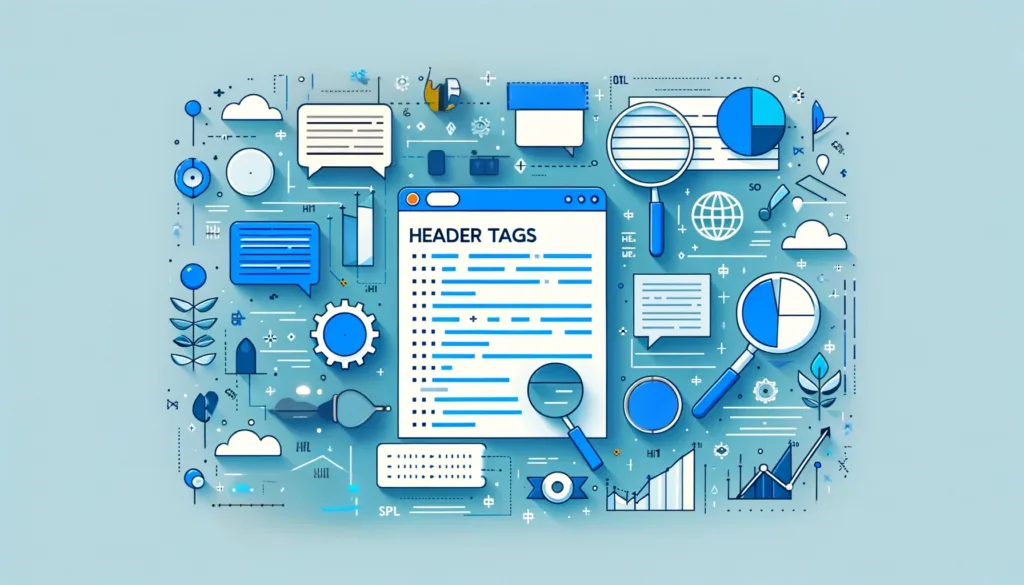Introduction
Header tags are essential for structuring your content and improving your SEO. They help search engines understand your content and make it easier for readers to navigate your articles. This guide will walk you through the best practices for using header tags effectively in 2024.
Understanding Header Tags
What Are Header Tags?
Header tags, also known as heading tags, are HTML elements used to define headings on a webpage. They range from H1 to H6, with H1 being the most important and H6 the least. These tags help to create a hierarchy and structure in your content, making it more readable and SEO-friendly.
Different Levels of Header Tags
Header tags are used to differentiate sections and subsections within your content:
H1: The main title of the page. It should be distinct and used only once.
H2: Major sections that support the main title.
H3: Subsections that provide more detail under H2 sections.
H4-H6: Further subsections, used for additional structure if needed.
Using these tags correctly helps both users and search engines understand the flow and importance of your content.
Best Practices for Using Header Tags
Structuring Your Content
Using header tags to structure your content creates a logical flow. Start with an H1 for the main topic, then use H2 tags for major sections. Under each H2, use H3 tags for subsections. This hierarchy makes your content easier to read and understand.
Enhancing Readability
Break up long blocks of text with subheadings. This not only improves readability but also helps to keep readers engaged. Shorter paragraphs and frequent subheadings make your content more skimmable and user-friendly.
Optimizing Header Tags for SEO
Keyword Placement
Incorporate your main keyword naturally into your header tags. For instance, if your keyword is “How to Use Header Tags for SEO in 2024,” use it in your H1 and variations of it in your H2 and H3 tags. This indicates to search engines the relevance of your content to the keyword.
Avoiding Keyword Stuffing
While it’s important to include keywords, avoid overloading your header tags with them. Keyword stuffing can make your content look spammy and reduce its readability. Instead, use semantically related keywords and phrases to enhance your SEO.
Emerging Trends in Header Tag Usage for 2024
Voice Search Optimization
With the rise of voice search, it’s crucial to adapt your header tags. People often use conversational phrases when speaking, so incorporating natural language and long-tail keywords in your headers can improve your chances of appearing in voice search results.
Advanced Strategies for Voice Search Optimization in 2024.
Semantic Search Integration
Search engines are getting better at understanding context. Use header tags to create a clear and logical structure that aligns with the intent behind search queries. This helps your content rank higher for relevant searches.
Semantic Search and SEO in 2024.
Common Mistakes and How to Avoid Them
Overuse of H1 Tags
Using more than one H1 tag can confuse search engines about the main topic of your page. Stick to a single H1 tag and use H2 and H3 tags for other sections.
Inconsistent Formatting
Ensure consistency in your header tag formatting. For example, if you start with an H2 for a section, do not jump to an H4 without using an H3. Consistent formatting helps maintain a logical flow and improves readability.
Case Studies and Real-World Examples
Successful Implementations
Look at websites like Moz that effectively use header tags. They structure their content with clear headings, making it easy for readers and search engines to understand.
Lessons Learned
From these examples, we learn the importance of a clear hierarchy, consistent formatting, and avoiding keyword stuffing. Implementing these practices can significantly improve your SEO performance.
Conclusion
Header tags are a powerful tool for both SEO and user experience. By following these best practices, you can create content that is easy to navigate and highly ranked by search engines. Implement these strategies in your content to stay ahead in 2024 and beyond.
Author
-

Alex, our Page Sorcerer, weaves the magic of on-page and off-page SEO. With a strategic mindset, he navigates the digital realms to enhance your website's visibility and relevance.
View all posts




